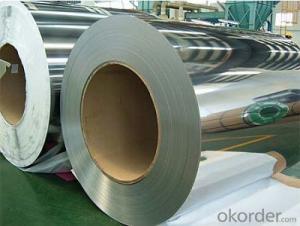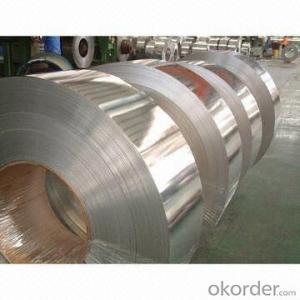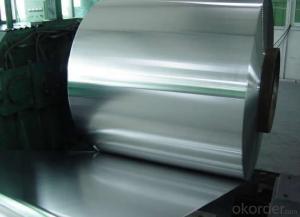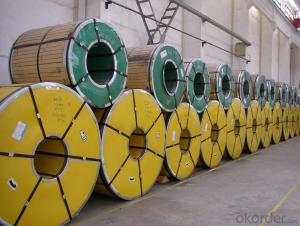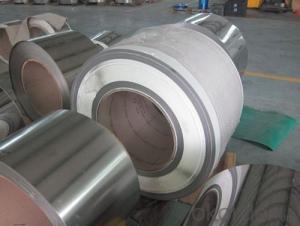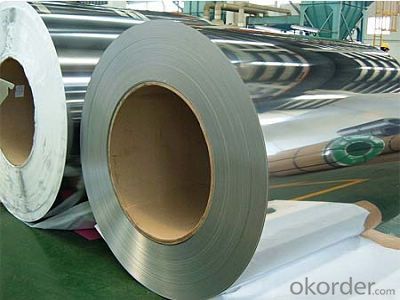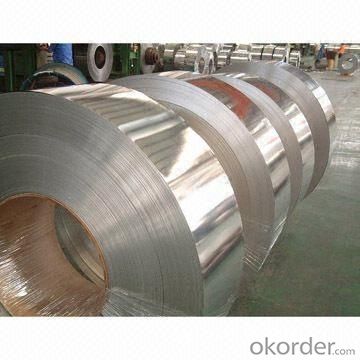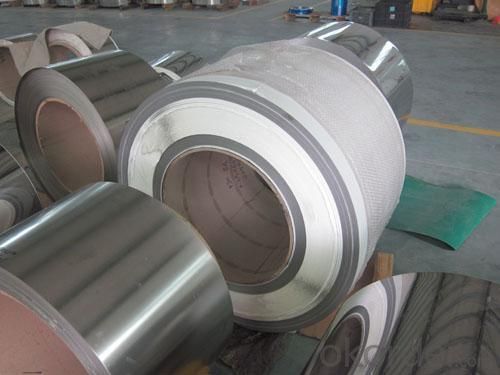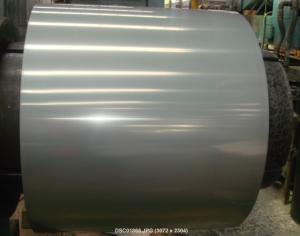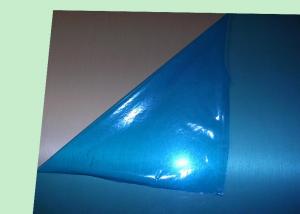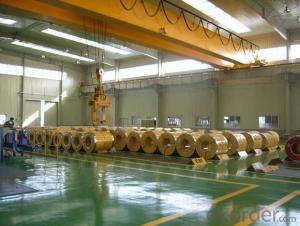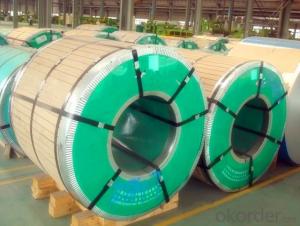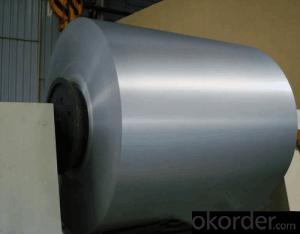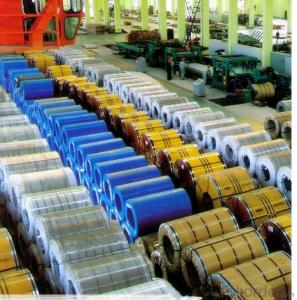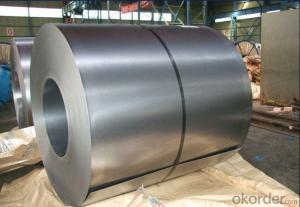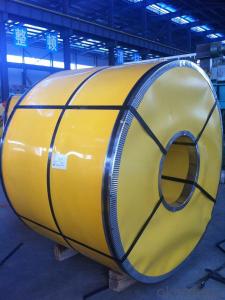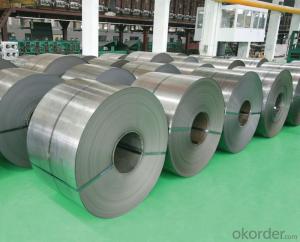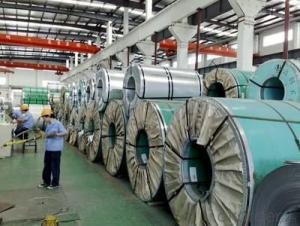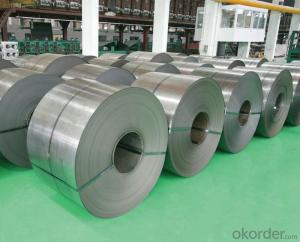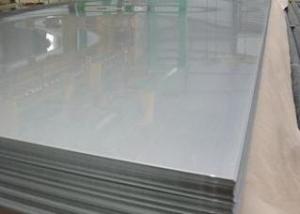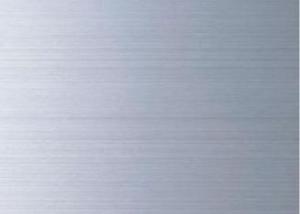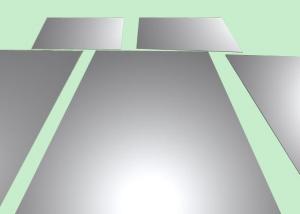Fisrt Class 304 cold rolled stainless steel coil
- Loading Port:
- China main port
- Payment Terms:
- TT OR LC
- Min Order Qty:
- 20 m.t.
- Supply Capability:
- 1000 m.t./month
OKorder Service Pledge
OKorder Financial Service
You Might Also Like
Detail of item:
Article | 304 cold rolling stainless steel coil |
Surface | 2B/BA/HL/No.4/4K/6K/8K |
Technique | Cold rolling |
Length | 0-6000mm |
Width | 1m/1.219m/1.5m |
Thickness | 0.3-3.0mm |
Application | Food industry equipment,Ordinary chemical equipment,building |
Packing | Stainless steel coil will use water-proof paper, steel strip packed, wooden case. Or as your requirements. |
Payment | Small quantity (within total $20000.00): T/T at sight, 30% in advance , 70% after receiving the B/L Large quantity : L/C at sight |
Container Size | 20ft GP:5898mm(Length)x2352mm(Width)x2393mm(High) 40ft GP:12032mm(Length)x2352mm(Width)x2393mm(High) 40ft HC:12032mm(Length)x2352mm(Width)x2698mm(High) |
Delivery Time | 7-15 days after received L/C or the deposit of T/T or WU |
Note | We can produce by other standards or according to your requirement |
Chemical composition :
Grade | C (Max) | Mn (Max) | P (Max) | S (Max) | Si (Max) | Cr | Ni | Mo | Nitrogen (Max) | Cu/ Others |
201 | 0.15 | 5.50-7.50 | 0.06 | 0.03 | 1 | 16.00-18.00 | 3.50-5.50 | - | 0.25 | |
202 | 0.15 | 7.50-10.00 | 0.06 | 0.03 | 1 | 17.00-19.00 | 4.00-6.00 | - | 0.25 | |
301 | 0.15 | 2 | 0.045 | 0.03 | 1 | 16.00 - 18.00 | 6.00 - 8.00 | - | 0.1 | - |
304 | 0.08 | 2 | 0.045 | 0.03 | 1 | 18.00 - 20.00 | 8.00- 10.50 | - | 0.1 | - |
304L | 0.03 | 2 | 0.045 | 0.03 | 1 | 18.00 - 20.00 | 8.00- 12.00 | - | 0.1 | - |
310S | 0.08 | 2 | 0.045 | 0.03 | 1.5 | 24.00- 26.00 | 19.00-22.00 | - | - | - |
316 | 0.08 | 2 | 0.045 | 0.03 | 1 | 16.00 - 18.00 | 10.00- 14.00 | 2.00 - 3.00 | 0.1 | - |
316L | 0.03 | 2 | 0.045 | 0.03 | 1 | 16.00 - 18.00 | 10.00- 14.00 | 2.00 - 3.00 | 0.1 | - |
316Ti | 0.08 | 2 | 0.045 | 0.03 | 1 | 16.00 - 18.00 | 10.00- 14.00 | 2.00 - 3.00 | 0.1 | Ti5x C Min |
317 | 0.08 | 2 | 0.045 | 0.03 | 0.75 | 18.00 - 20.00 | 11.00 - 14.00 | 3.00 - 4.00 | 0.1 | - |
317L | 0.03 | 2 | 0.045 | 0.03 | 0.75 | 18.00 - 20.00 | 11.00 - 15.00 | 3.00 - 4.00 | 0.1 | - |
321 | 0.08 | 2 | 0.045 | 0.03 | 0.75 | 17.00 - 19.00 | 9.00 - 12.00 | - | 0.1 | Ti5xC Min |
347 | 0.08 | 2 | 0.045 | 0.03 | 0.75 | 17.00 - 19.00 | 9.00 - 13.00 | - |
- Q: What are the common length tolerances for stainless steel strips?
- The common length tolerances for stainless steel strips typically vary depending on the specific industry standards and requirements. However, common length tolerances for stainless steel strips can range from +/- 0.005 inches to +/- 0.030 inches, or even tighter tolerances depending on the precision needed for the application.
- Q: Can stainless steel strips be used in outdoor applications?
- Yes, stainless steel strips can be used in outdoor applications. Stainless steel is highly resistant to corrosion and rust, making it suitable for various outdoor environments. It can withstand exposure to moisture, rain, and extreme temperatures, making it an ideal choice for outdoor construction, architecture, and other applications.
- Q: Can stainless steel strips be used for chemical processing equipment?
- Yes, stainless steel strips can be used for chemical processing equipment. Stainless steel is a popular choice in the chemical industry due to its excellent corrosion resistance, high strength, and durability. It is resistant to many chemicals and can withstand harsh environments, making it suitable for various applications in chemical processing, such as storage tanks, reactors, piping systems, and heat exchangers. Stainless steel strips can be fabricated into different shapes and sizes, allowing for customized designs to meet specific process requirements. Additionally, stainless steel is easy to clean and maintain, ensuring hygienic and safe operation in chemical processing facilities.
- Q: Can stainless steel strips be used in the textile industry?
- Yes, stainless steel strips can be used in the textile industry. They are often used in textile machinery for various purposes such as guiding, conveying, and cutting fabrics. Stainless steel strips offer durability, resistance to corrosion, and high strength, making them suitable for various applications in the textile industry.
- Q: How do stainless steel strips compare to other materials?
- When comparing stainless steel strips to other materials, they stand out for several reasons. Firstly, stainless steel is renowned for its exceptional resistance to corrosion. This characteristic makes it the perfect choice for applications that involve exposure to moisture, chemicals, or harsh environments. Unlike other materials, stainless steel does not easily rust or stain, ensuring durability and longevity. Secondly, stainless steel strips exhibit outstanding strength and toughness. They possess a high tensile strength, enabling them to withstand heavy loads and resist deformation under stress. This quality makes stainless steel strips suitable for applications that require structural integrity and reliability. Another notable advantage of stainless steel strips lies in their aesthetic appeal. Stainless steel has a sleek and modern appearance that can enhance the visual appeal of any project or product. It is commonly utilized in architecture and interior design due to its clean and contemporary look. Moreover, stainless steel strips offer exceptional versatility. They can be easily formed, welded, and fabricated into various shapes and sizes to meet specific requirements. This flexibility allows stainless steel strips to be utilized across a wide range of industries, including construction, automotive, aerospace, and manufacturing. Lastly, stainless steel is a sustainable and environmentally friendly material. It is 100% recyclable, making it an excellent choice for projects with a focus on sustainability. Additionally, stainless steel has a long lifespan, reducing the need for frequent replacements and minimizing waste. In conclusion, stainless steel strips excel in terms of corrosion resistance, strength, aesthetic appeal, versatility, and sustainability when compared to other materials. These characteristics make stainless steel a top-notch choice for numerous applications in various industries.
- Q: Can stainless steel strips be used in food processing applications?
- Certainly, food processing applications can utilize stainless steel strips. Given its exceptional corrosion resistance, durability, and hygiene properties, stainless steel emerges as an optimal material for the food industry. It effectively withstands rust, staining, and chemical reactions, rendering it suitable for interacting with diverse food products. Stainless steel strips frequently find their place in food processing equipment like conveyors, mixers, tanks, and cutting tools. Furthermore, stainless steel proves effortless to clean and maintain, thereby guaranteeing the utmost food safety standards and averting contamination.
- Q: What are the weight and density of stainless steel strips?
- The weight and density of stainless steel strips may vary based on the particular grade and thickness of the strips. However, in general, stainless steel is a dense material that surpasses the weight of numerous other metals. Stainless steel usually exhibits a density ranging from 7.75 to 8.05 grams per cubic centimeter, a considerably higher value compared to aluminum (2.7 g/cm³) or titanium (4.5 g/cm³). Regarding the weight of stainless steel strips, it relies on the strip's dimensions. To calculate the weight of a stainless steel strip, one must multiply the density of stainless steel by the volume of the strip. The strip's volume can be determined by multiplying its length, width, and thickness. Consequently, to accurately ascertain the weight and density of stainless steel strips, it is crucial to have knowledge about the specific grade and dimensions of the strips in question.
- Q: Can stainless steel strips be used in the production of jewelry?
- Stainless steel strips are indeed applicable for jewelry production. Given its durability and resistance to corrosion, stainless steel emerges as a fitting choice for jewelry pieces meant to endure daily usage. It allows the creation of diverse jewelry forms, such as rings, bracelets, necklaces, and earrings. Stainless steel strips can be effortlessly molded, engraved, or textured to yield one-of-a-kind and elaborate designs. Moreover, stainless steel jewelry presents an affordable alternative compared to other valuable metals, thus appealing to both consumers and jewelry craftsmen.
- Q: Stainless steel pan with magnetic or good without magnetic stainless steel pot?
- Good with magnetic and without magnetism. See what you like.
- Q: Can stainless steel strips be used in the production of automotive exhaust systems?
- Yes, stainless steel strips can be used in the production of automotive exhaust systems. Stainless steel is a popular choice for exhaust systems due to its excellent corrosion resistance, high heat resistance, and durability. These properties make stainless steel strips ideal for withstanding the extreme conditions and temperatures that exhaust systems are subjected to. Additionally, stainless steel strips can be easily welded and formed into the necessary shapes and configurations required for automotive exhaust systems.
Send your message to us
Fisrt Class 304 cold rolled stainless steel coil
- Loading Port:
- China main port
- Payment Terms:
- TT OR LC
- Min Order Qty:
- 20 m.t.
- Supply Capability:
- 1000 m.t./month
OKorder Service Pledge
OKorder Financial Service
Similar products
Hot products
Hot Searches
Related keywords
